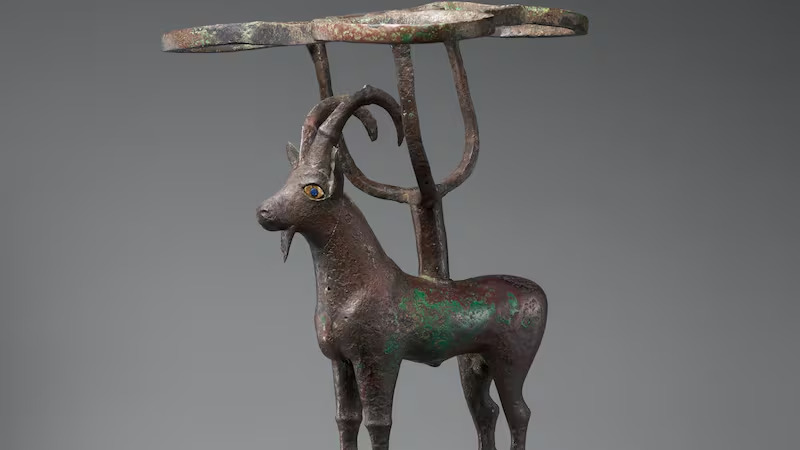Rare 4,500-Year-Old Ibex Statue Returned to Iraq After Five Decades in U.S. Museum

A 4,500 years old Mesopotamian statue has been returned to Iraq after spending more than fifty years in New York’s Metropolitan Museum of Art. Known as the “Vessel Stand with Ibex Support,” the copper-alloy sculpture dates back to around 2600–2350 BCE and is one of the earliest examples of the hollow-core lost-wax casting technique , an innovation still in use by metal artists today.
The handover ceremony took place at ‘The Met’, where Iraqi and U.S. officials gathered to mark what the Iraqi Embassy in Washington described as “a reaffirmation of our natural place as the cradle of human civilisation.”
The artifact depicts a wild goat with curled horns, inlaid with shell and lapis lazuli, bearing traces of green oxidation from centuries underground. Beyond its artistic value, the Ibex statue represents an early piece of Sumerian ritual culture, created in Mesopotamia between the Tigris and Euphrates rivers.
Kim Benzel, The Met's curator of ancient West Asian art, emphasized its unique presence: “This is an object that is so direct, I mean it’s really looking at you … if it is a ritual object, it is navigating between the world of humans and the world of divine.”
The Met had purchased the piece in 1974, displaying it almost continuously since 1977. Reflecting on its long stay in New York, Benzel added: “We’ve enjoyed it tremendously and loved it many years.” However, new provenance research confirmed Iraq’s rightful ownership, prompting The Met to initiate its return.
This restitution is part of The Met’s Cultural Property Initiative, launched in 2023 to reassess works in its collection and return looted or improperly acquired artifacts. Earlier this year, Iraq also recovered three Sumerian and Babylonian objects from the museum, including alabaster and ceramic pieces.
Following the repatriation, the Ibex statue has been sent to the Fraunhofer Institute in Munich, Germany, for advanced CT scanning to study its casting process. The Met highlighted the importance of this collaboration, stating: “The ibex in the centre of this extraordinary work of art is among the oldest known examples of the use of a clay core in casting a human or animal figure by direct lost-wax casting – an innovative breakthrough that enabled the creation of large and complex metal sculptures and continues to be used by artists today.”
For Iraq, the return is both a victory and a reminder of losses yet unrecovered. Decades of war, sanctions, and looting, particularly following the 2003 U.S.led invasion, devastated Iraq’s cultural heritage. Priceless artifacts were stolen from the National Museum in Baghdad and countless archaeological sites, many of which remain unaccounted for. As the Iraqi Embassy acknowledged, while this recovery is significant, it is “a small victory set against the backdrop of a massive cultural tragedy.”
The statue will now be transferred to Baghdad and placed in the national museum. Iraqi officials say this achievement underscores the country’s ongoing commitment to reclaiming its cultural identity piece by piece, despite the challenges of international antiquities smuggling.




